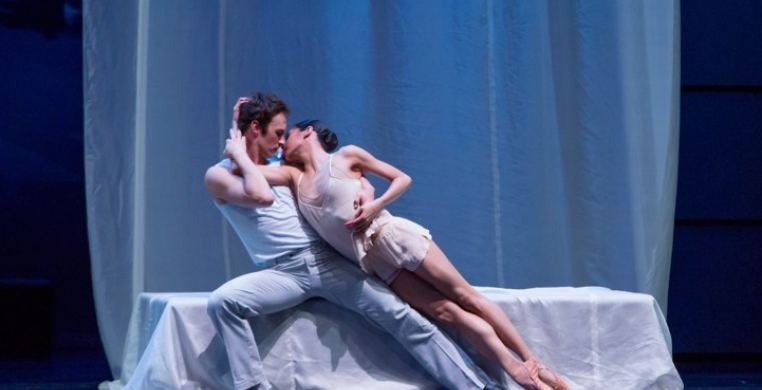The Joffrey Ballet's season opener, Krysztof Pastor's Romeo & Juliet, is a strategic move for Chicago's big ballet company in a number of ways. Shakespeare's timeless tragedy of star-crossed lovers is brought back after two years on the shelf in part to celebrate the 400th anniversary of the playwright's death alongside a number of other Shakespeare events throughout the city. The other part is about buying time while Joffrey simultaneously puts up a brand new, very big, very expensive Nutcracker set to premiere in December. Considering that, it's hard to believe that they pulled R & J off, even having done this one before. Reviving a full-length ballet is no small feat, and looking at the excited crowds filing into the Auditorium Theatre it was nearly impossible to see evidence of the inevitable stress the company must be under during the first half of this season.
That being said, the shimmer of this ballet, a re-imagination of the tale playing the story out over three historically significant decades in 20th century Italy was a teensy bit brighter in 2014 when it premiered in Chicago.
Pastor's interpretation is one that transcends time, despite specific references to distinct time periods via costume and clues in a projection of an Italian city streetscape. Cars parked on the side street indicate a shift in era, but the characters are ageless, in keeping with the original storyline. The idea is that this is a story that repeats itself - that every place and time has a Romeo and a Juliet. It's smart, and touching, and hands down one of the most beautiful ballets in recent memory, but to the average viewer, more context might be helpful. The first time I viewed this ballet in 2014, I struggled to separate the Prokofiev score from the beloved (to me, anyway) Kenneth MacMillian version, and the shift to the third time period, set in the 1990's, escaped me completely. While I came to embrace Pastor's decadent, full-stage unisons scattered through the first and second acts (although they were a bit muddier than usual), and brilliant characters created by Matthew Adamczyk as the distinctive Lord Capulet and Derrick Agnoletti as the goofy Benvolio, I still, regretfully, came out of the theater not quite getting it.
The virtue in this ballet, above all else, is its dancing. Unlike some of its competitor R & Js, every magnificent step appears to have meaning and advance the narrative (whether you get it or not). It lacks frivolity, but is sufficiently hard and appears quite fun to dance. Pastor's effort to turn Shakespeare on its head does not do what West Side Story did, or even Claire Danes and Leonardo DiCaprio. Perhaps it's the strict adherence to the classic Sergei Prokofiev score that keeps me seeking clarity and understanding, or perhaps this ballet is supposed to be a more radical abstraction of the original (a la John Neumeier's Sylvia) and just doesn't go quite far enough.

